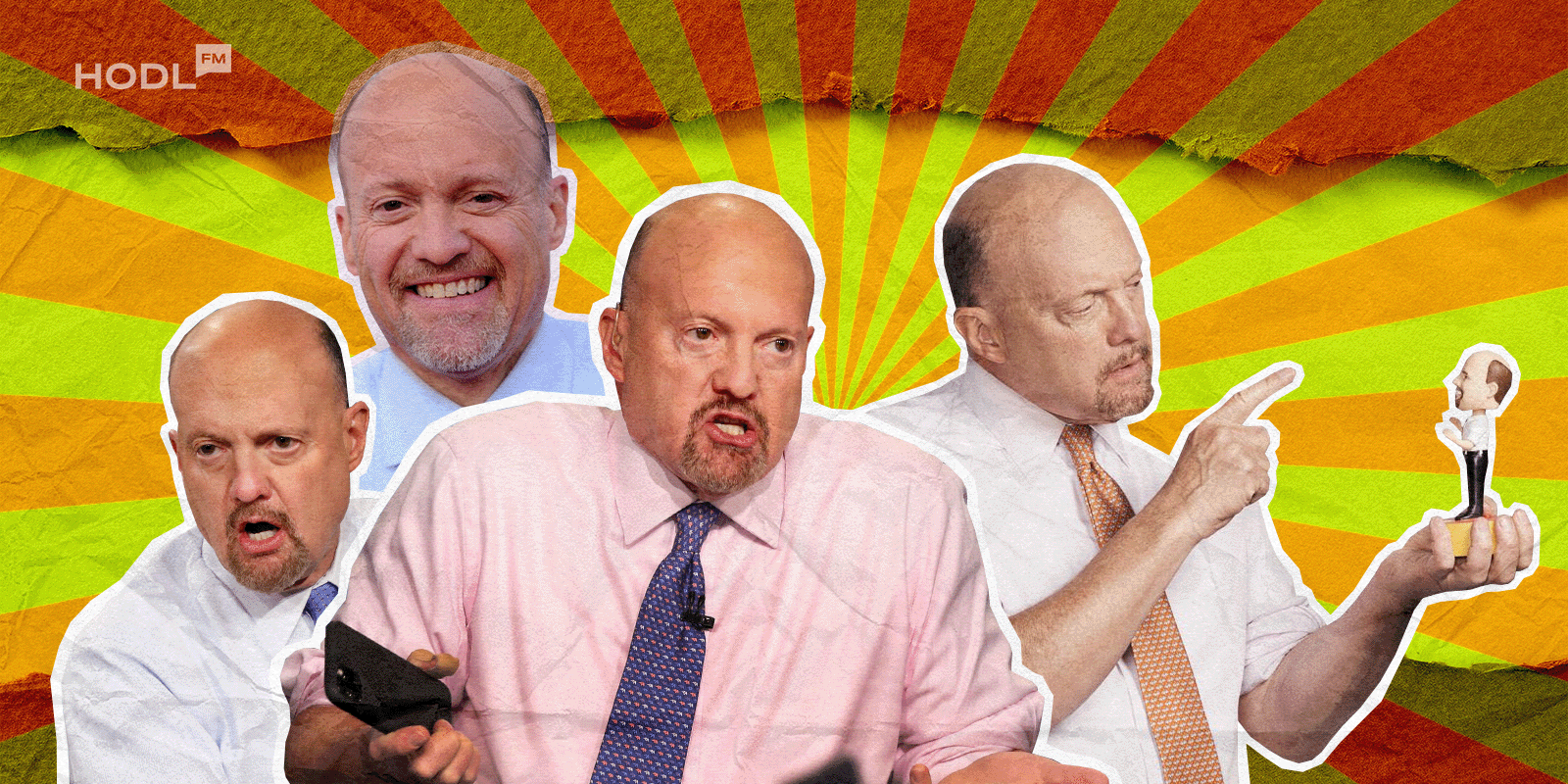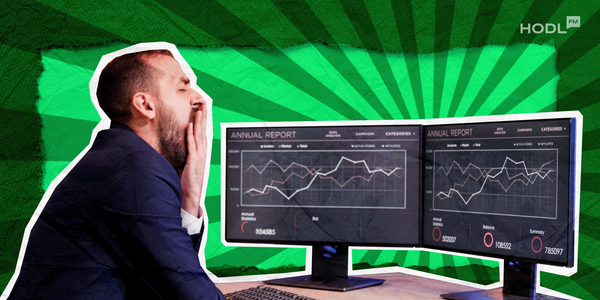Jim Cramer, the lively and animated host of CNBC’s Mad Money, has become a staple in financial media, famed for his enthusiastic and sometimes eyebrow-raising financial advice.
While his expertise traditionally lies in the stock market, Cramer's recent foray into the world of cryptocurrency has sparked both admiration and skepticism. His daring assertions, market forecasts, and shifting opinions on Bitcoin and other digital currencies have left many wondering: Is Cramer a trustworthy financial guru, a charismatic influencer shaping public opinion, or just a hype-driven opportunist riding the latest market waves?
Career and Early Life
Jim Cramer entered the world on February 10, 1955, in Wyndmoor, Pennsylvania. Even as a youngster, he was captivated by finance, memorizing stock symbols and trading patterns. Cramer graduated from Harvard College in 1977 with a degree in government and later earned a Juris Doctor degree from Harvard Law School in 1984.
During his law degree, he worked as a journalist, including time as the editor-in-chief of The Harvard Crimson. However, his true passion for the financial markets led him to join Goldman Sachs after law school, working in sales and trading.
In 1987, he founded his hedge fund, Cramer & Co., which reportedly achieved an impressive annualized return of 24% over 14 years. His success in the financial world led to his co-founding of TheStreet.com in 1996, a platform providing financial news and analysis. However, it was his leap into television with CNBC’s Mad Money in 2005 that made him a mainstream financial figure. His loud, high-energy style, combined with memorable catchphrases and sound effects, made his market commentary widely popular (though not always accurate).
How did he actually enter the cryptocurrency industry, you ask? Let’s dive in. Are you ready, skidaddy?
Cramer’s Entry into Crypto: From Skeptic to Advocate
Jim Cramer was quite the Bitcoin skeptic, later confessing he was "premature" in his judgment. Back in the early 2010s, he frequently bashed digital assets for their wild volatility and lack of intrinsic value, likening Bitcoin to speculative bubbles rather than a legitimate investment class.
But come 2020, Cramer's tune changed dramatically. With institutional adoption on the rise and inflation worries spurred by the COVID-19 pandemic, he took the plunge and bought Bitcoin for the first time. Suddenly, it was a hedge against inflation and fiscal policies.
Here's how Cramer's crypto epiphany unfolded:
In 2020: He bought his first Bitcoin, admitting he was “wrong” to dismiss it early on. He likened Bitcoin to gold, emphasizing its scarcity and role as a store of value.
In 2021: Just a year later, he cashed in on some of his Bitcoin holdings after raking in significant profits, advising viewers to "take some off the table" during market highs.
This shift from skepticism to cautious optimism mirrored a broader trend among institutional investors and financial media figures during Bitcoin’s surge past $50,000.
Crypto Predictions and Outcomes
He also had several bold predictions in the cryptocurrency space, some with surprising accuracy while others backfired. Here’s a breakdown of some of his most notable crypto calls:
1. “Sell All Crypto After the FTX Collapse” (December 2022)
During the FTX collapse, Cramer advised viewers to sell their crypto holdings, calling anyone holding Bitcoin and other assets “idiots” for staying in the market.
Bitcoin was trading at around $16,500 when he made this call. However, by mid-2023, it had surged past $30,000, effectively doubling in value. This call backfired significantly. It led to increased skepticism around his accuracy and fueled the “Inverse Cramer” meme, where investors bet against his calls.
2. “Bitcoin Will Crash Due to Rising Interest Rates” (March 2023)
In 2023, his views were more on the bearish aspect suggesting that Bitcoin would face significant pressure as the Federal Reserve raised interest rates aggressively in 2023.
Even though Bitcoin faced short-term volatility, it managed to keep climbing, showing resilience despite rate hikes. This prediction somewhat matched market trends but overlooked Bitcoin's long-term strength as a decentralized asset.
3. “Bitcoin as a Hedge Against National Debt” (November 2024)
Another sharp prediction was made again in November 2024, expecting that Bitcoin could act as a hedge against ballooning U.S. national debt, similar to gold.
His call coincided with increased institutional interest, including BlackRock’s spot Bitcoin ETF filing. However, Bitcoin’s price remained volatile, undermining the claim of being a stable hedge. Despite being partially accurate about institutional adoption, the correlation between Bitcoin and risk assets remained high.
The “Inverse Cramer” Phenomenon
His market impact has inspired the now-famous “Inverse Cramer” phenomenon, where traders actively bet against his calls. This trend emerged after multiple high-profile incorrect predictions, especially in the crypto space. A popular example occurred in March 2022, when Cramer called Bitcoin a “scam,” just before a price rally.
Inverse Cramer ETF: In 2023, a fund called the “Inverse Cramer ETF” (ticker: SJIM) was launched, designed to take positions opposite to Cramer’s recommendations. It gained traction due to his mixed market calls, particularly in speculative assets like cryptocurrency.
This phenomenon has turned him into both a financial meme and a cautionary tale about market timing.
Right or Wrong? Key Lessons from Cramer's Predictions
Cramer has undeniably made both accurate and misleading calls in the crypto market. However, it’s essential to analyze his statements objectively:
Right Predictions:
- Advocating for Bitcoin as a legitimate asset in 2020 during its institutional adoption phase.
- Caution against speculative altcoins during the peak of the 2021 bull market.
Wrong Predictions:
- Advising to sell Bitcoin during its lowest points in 2022
- Misjudging crypto’s resilience against macroeconomic factors in 2023
Cramer's Future Predictions
In 2025, he acts very cautiously on the topic of cryptocurrency. Now that he is no longer outright dismissive, he continues emphasizing portfolio diversification and supports keeping crypto exposure limited to under 5% of an investment portfolio.
He now acknowledges the transformative potential of blockchain technology but remains skeptical of speculative meme coins and unregulated exchanges.
So, Who is Jim Cramer - Influencer or Crypto Advisor?
Jim Cramer’s relationship with cryptocurrency is complex. Although he has demonstrated a willingness to adapt his views, his inconsistent track record raises questions about his reliability as an investment advisor. His dramatic statements often fuel market reactions—sometimes accurately and sometimes wildly off the mark.
Ultimately, Cramer is best seen as an entertainer with financial insights rather than a professional financial advisor. His views can spark meaningful discussion, but investors should always seek multiple data points and professional analysis before making financial decisions.
Disclaimer: All materials on this site are for informational purposes only. None of the material should be interpreted as investment advice. Please note that despite the nature of much of the material created and hosted on this website, HODL FM is not a financial reference resource and the opinions of authors and other contributors are their own and should not be taken as financial advice. If you require advice of this sort, HODL FM strongly recommends contacting a qualified industry professional.




